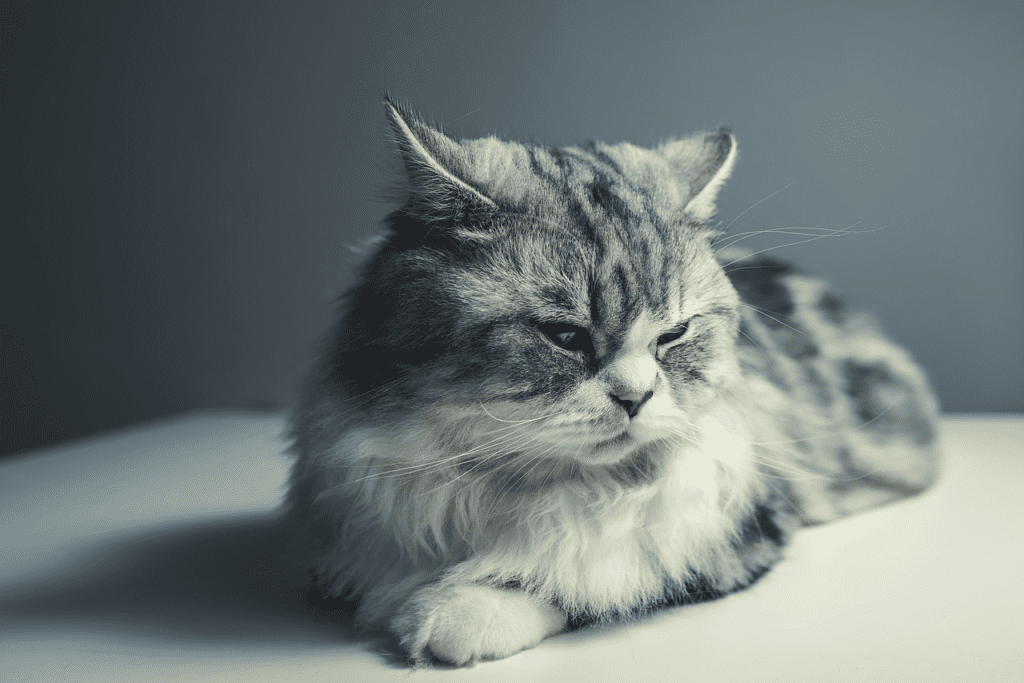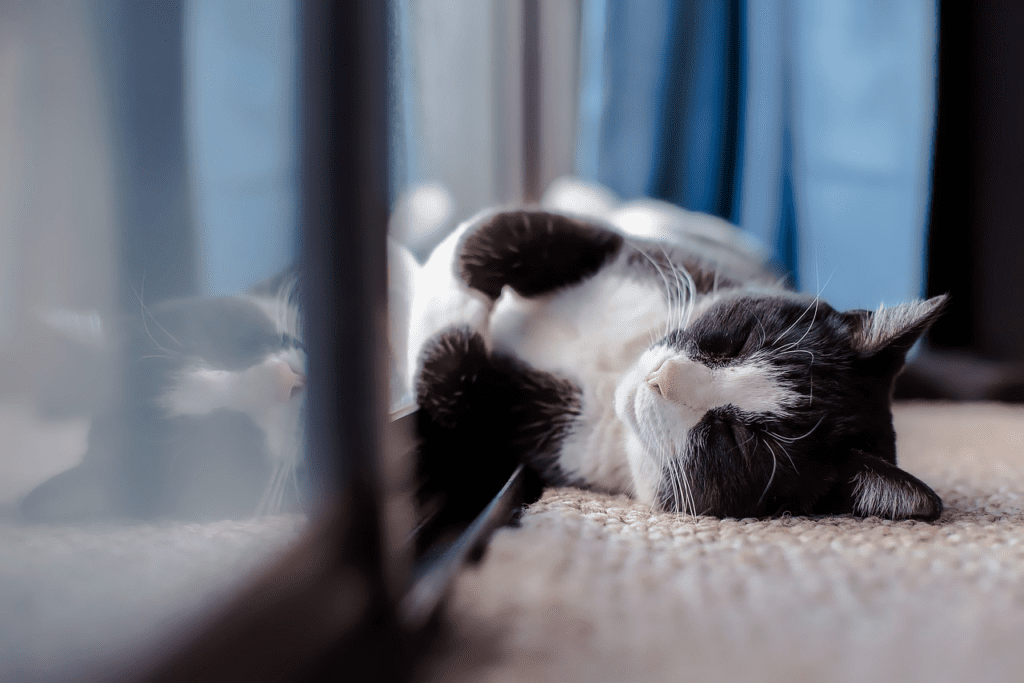In the vast and varied world of feline companions, domestic cat breeds offer a spellbinding array of choices for the discerning pet enthusiast. These breeds, each with its unique characteristics and charm, not only differ in their physical traits such as size, coat texture, and color patterns, but also in their personalities and health profiles. With a comprehensive understanding of these diverse breeds, you can find your perfect match, whether you’re searching for a playful companion, a laid-back lap cat, or an exotic beauty.
Domestic cat breeds, as the term suggests, refers to the types of cats that have been selectively bred by humans for specific traits. These traits can include, but are not limited to, physical characteristics, personality traits, and certain health aspects. These breeds range from the highly popular ones like the Siamese and Maine Coon, to the rarer and more exotic cat breeds such as the Scottish Fold.
On one end of the spectrum, you have small cat breeds like the Munchkin, known for their petite stature and playful demeanor. On the other end, you’ll find large cat breeds such as the majestic Maine Coon, renowned for their size and regal appearance.
The world of domestic cat breeds is replete with variety. From short-haired cat breeds that are easy to groom and perfect for a busy lifestyle, to long-haired cat breeds that are gloriously fluffy and require regular grooming sessions, there’s a breed to suit every preference.
Understanding domestic cat breeds is not only fascinating but essential for potential cat owners. It allows you to find a breed that aligns with your lifestyle, and it’s the first step towards ensuring a harmonious relationship with your furry friend. So, join us as we delve into this fascinating world and uncover the charm, history, and characteristics of various domestic cat breeds.
History of Domestic Cat Breeds

Domestication of Cats
The story of domestic cat breeds begins with their domestication. The relationship between cats and humans dates back almost 9,500 years, according to genetic studies. Unlike dogs, which were actively domesticated by humans, cats are thought to have domesticated themselves. They were attracted to human settlements due to the abundance of rodents, and in turn, early humans likely tolerated their presence because of their skill in controlling pests.
Over time, wildcats that were less fearful of humans would have had a survival advantage, leading to the evolution of a tamer species — the domestic cat, or Felis catus. This natural selection process led to the diverse array of domestic cat breeds we see today.
Development of Different Breeds
The concept of specific cat breeds, much like dog breeds, is relatively modern. Most early domestic cats were likely similar to the African wildcat, the species believed to be the primary ancestor of today’s domestic cats. However, as cats spread around the world, they began to diverge in appearance and behavior in response to different environments and human preferences.
The first record of cat breeding comes from the Victorian era, when the British began to breed cats for specific traits, leading to the emergence of breeds like the British Shorthair. The trend soon spread to other countries, and in the late 19th and early 20th centuries, cat shows became popular, further encouraging the development of distinctive breeds.
Today, we have a plethora of domestic cat breeds to choose from, each with their unique characteristics. From the large, muscular Maine Coons and the elegant, slender Siamese to the exotic, spotted Bengal and the striking, blue-eyed Ragdoll, there’s a breed to suit every preference.
The development of breeds continues even today, with new cat breeds like the Lykoi (or “werewolf cat”) and the Toyger (a breed designed to resemble a miniature tiger) being recognized in the 21st century.
To sum up, the history of domestic cat breeds is a fascinating combination of natural evolution and intentional breeding. It’s a testament to the enduring bond between humans and cats, and the joy and companionship these wonderful creatures can bring into our lives.
Popular Domestic Cat Breeds
Delving into the captivating sphere of domestic feline varieties, we encounter an array of breeds that are as diverse as they are beguiling. The breeds we will discuss here are just some of the popular cat breeds that cat enthusiasts frequently choose for their unique characteristics and charm.
Siamese

The Siamese is a distinctive breed, celebrated for its sapphire-blue eyes, color-point coat, and chiseled facial features. A native of Thailand, this breed is one of the oldest and most recognized of the Asian cat breeds. Known for its sociability, the Siamese is also famously vocal, often engaging its owners in conversations with its low-pitched, loud voice.
Maine Coon

Originating from the United States, the Maine Coon is a breed that stands out due to its majestic size, making it one of the large cat breeds. Recognizable by its long, bushy tail and tufted ears, this breed boasts a semi-long coat that is dense and water-resistant. Maine Coons are known for their friendly and playful temperament, often getting along well with children and other pets.
Persian

The Persian breed, with its long, luxurious coat and sweet expression, is a sight to behold. Renowned for its tranquil demeanor, the Persian is an ideal indoor cat that enjoys a peaceful environment. This breed requires regular grooming due to its long hair, making it a part of the long-haired cat breeds.
Ragdoll

The Ragdoll, named for its tendency to go limp when lifted, is a large, affectionate breed with striking blue eyes and a semi-long coat. Known for their placid temperament and adoration for their human companions, Ragdolls have often been described as “dog-like” cats due to their tendency to follow their owners around and their ease at being physically handled.
Scottish Fold

Last but not least, the Scottish Fold is a breed that is instantly recognizable by its unique folded ears, earning it a spot among the cat breeds with folded ears. This breed has a sweet and good-natured personality and is known for its ability to stand on its hind legs, a trait it shares with few other breeds.
In our exploration of these popular breeds, we’ve only scratched the surface of the diverse world of domestic cats. Each breed carries its own unique set of traits and quirks, contributing to the fascinating tapestry of feline companionship.
Characteristics of Domestic Cat Breeds

Physical Traits
The world of domestic cat breeds is as diverse as it is intriguing. The physical characteristics of these beloved companions run the gamut from the sleek, slim profile of the Siamese to the robust and muscular build of the Maine Coon. The latter, in fact, is one of the large cat breeds known for its impressive size and bushy tail.
Coat length and texture are another distinguishing factor among breeds. Some cats, like the Persian, have long, lush coats that require regular grooming. Others, like the Scottish Fold, have short and dense fur. Some unique cat breeds, such as the Sphynx, are even completely hairless.
Eye color, ear shape, and tail length are additional physical traits that vary extensively across different breeds. For instance, the striking blue eyes of a Siamese or the folded ears of a Scottish Fold are distinctive features that set these breeds apart.
Personality Traits
When it comes to personality, each breed presents its own unique set of qualities. Some breeds, like the Siamese, are known for their vocal nature and high energy levels, making them one of the more playful cat breeds. On the other hand, breeds like the Ragdoll are famous for their placid temperament and affectionate nature, earning them the nickname “puppy-cats.”
It’s also worth noting that some breeds tend to be more independent or aloof, while others crave constant companionship. For example, the Maine Coon is known for its sociable and friendly demeanor, often following its human companions around the house.
Health and Lifespan
Health and lifespan vary considerably among different cat breeds. On average, domestic cats live between 13 to 17 years, but some breeds, like the Siamese, are known to surpass this average, living well into their early twenties.
Certain breeds are predisposed to specific health conditions. Persians, for instance, are prone to polycystic kidney disease and respiratory issues due to their distinctive flat faces. Maine Coons, on the other hand, are genetically predisposed to hip dysplasia and heart disease.
Regular veterinary check-ups are essential to ensure your cat’s health and longevity, regardless of their breed. These visits can help identify potential health issues early and provide preventive care to keep your feline friend in the best possible shape.
In conclusion, understanding the characteristics of different cat breeds can help prospective owners make informed decisions about which breed would best suit their lifestyle and preferences. Each breed offers its own unique mix of physical traits, personality qualities, and health considerations, making the world of domestic cats a truly fascinating one to explore.
Choosing the Right Breed for You
Selecting the ideal cat breed to become a part of your family is far more than a mere aesthetic choice. It is a decision that should take into account several factors, including your lifestyle, allergies, and the compatibility of the breed with your existing pets.
Lifestyle Considerations
Every cat breed exhibits unique behavior patterns, activity levels, and care requirements. Some breeds like the active and playful Siamese or the agile Maine Coon may require extensive interactive playtime and grooming. On the other hand, breeds such as the laid-back Persian or the independent Scottish Fold might be better suited for individuals with a more relaxed lifestyle.
Consider your routine and the amount of time you can dedicate to your furry friend. If you’re an active individual, opt for a breed that thrives on exercise and interaction. For those who lead a more sedate lifestyle, a breed that is content with lounging around would be a better fit.
Allergies and Cat Breeds
Allergies are a crucial factor to consider when choosing a cat breed. Certain breeds produce fewer allergens, making them a preferable choice for individuals prone to allergies. For instance, breeds such as the Sphynx, Russian Blue, and Bengal are known to be hypoallergenic. You can find a more comprehensive list of hypoallergenic cat breeds on our website.
However, it’s important to remember that hypoallergenic does not mean allergen-free. If you or a family member has severe allergies, it is advisable to spend some time with a cat of the desired breed before making a commitment.
Compatibility with Other Pets
If you already have pets, their compatibility with the new feline addition should also be assessed. Certain breeds, like the sociable Ragdoll, tend to get along well with other pets. Conversely, some breeds may prefer to be the only pet in the household.
Research and understanding the temperament of different cat breeds will help ensure a harmonious coexistence of all your pets. It’s always recommended to conduct a gradual introduction of the new cat to your existing pets to increase the chances of a peaceful integration.
In conclusion, choosing the right cat breed is a multifaceted decision that requires careful consideration of your lifestyle, potential allergies, and the compatibility of the breed with other pets. Always remember, the right cat breed for you is one that fits seamlessly into your life, bringing joy and companionship to both parties.
How to Care for Different Cat Breeds
The care and attention required for the well-being of a cat can vary significantly from breed to breed. The differences in their feeding habits, grooming needs, and the frequency of regular check-ups, contribute to the distinct care routine each breed demands.
Feeding
Feeding your feline friend depends on numerous factors such as their age, weight, and breed. For instance, active breeds like the Siamese may require a calorie-rich diet to sustain their energy levels, while a more sedentary breed like the Persian may need fewer calories to prevent weight gain. Always consult a veterinarian to establish the optimal diet for your cat to ensure they’re getting the right nutrients.
Grooming
Grooming is an essential aspect of cat care. Long-haired cat breeds like the Maine Coon and Persian need daily combing to prevent matting and hairballs. On the contrary, short-haired cat breeds like the Siamese and Scottish Fold require less frequent grooming, often only once a week. Regardless of the fur length, all cats can benefit from regular brushing to stimulate their skin and keep their coat shiny. You can explore more about long-haired cat breeds and short-haired cat breeds on our site.
Regular Check-ups
Routine veterinary check-ups are crucial for maintaining your cat’s health. Some breeds are prone to specific health issues; for example, the Scottish Fold is prone to developing severe arthritic conditions. Regular visits to the vet can help detect potential health issues early and ensure your pet is in the best possible health.
It’s vital to remember that every cat, regardless of its breed, is unique. Understanding the needs of your specific cat goes a long way in ensuring they lead a healthy and happy life. Explore the fascinating world of cat breeds to better understand the care and attention your furry friend requires.
Recap and Final Thoughts
In our exploration of the riveting world of domestic cat breeds, we have journeyed through a rich tapestry of history, observed a plethora of unique breeds, and delved into the distinct characteristics that define each one. From the elegance of the Siamese to the majestic Maine Coon, the aristocratic Persian, the docile Ragdoll, and the unique Scottish Fold, we have seen that feline diversity is truly astounding.
We have also considered how these breeds exhibit varying physical traits, personality quirks, and health and lifespan tendencies. These factors play a significant role when choosing the right breed for you. Lifestyle considerations, allergies, and compatibility with other pets are all crucial aspects to keep in mind.
The care requirements for different cat breeds, from feeding to grooming and regular health check-ups, are essential aspects of ensuring your chosen feline companion leads a healthy and fulfilled life.
Despite the vast array of cat breeds available, it’s important to remember that every cat is unique. Whether it’s a large cat breed or a member of the small cat breeds, a long-haired cat breed or one of the short-haired cat breeds, each cat has its own individual character, quirks, and charm.
In sum, the world of domestic cat breeds is a fascinating and diverse one. Understanding the breeds and their distinct attributes can help in making an informed decision when choosing a feline companion. Remember, the key is to find a breed whose characteristics align well with your lifestyle and personal preferences.
Embrace the journey with your feline friend and relish in the joy, companionship, and love they bring into your life. After all, cats are not just pets; they are family.

